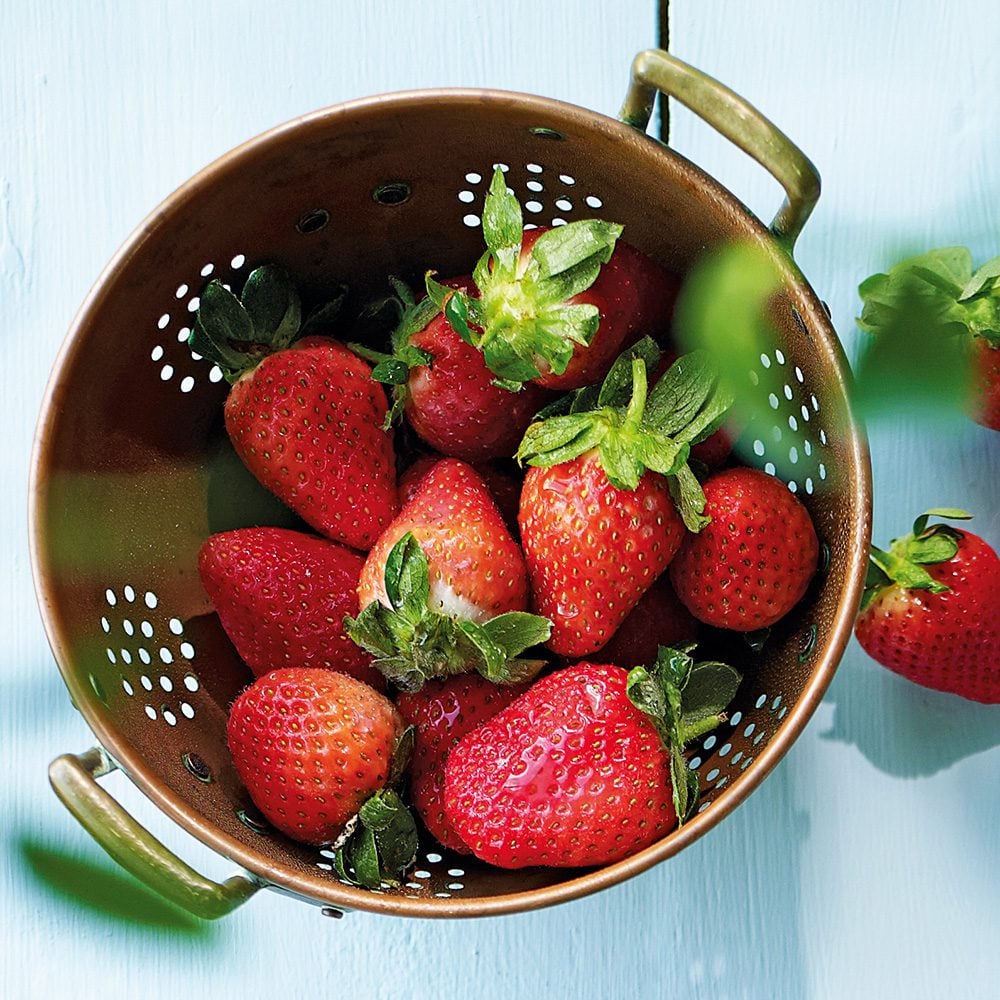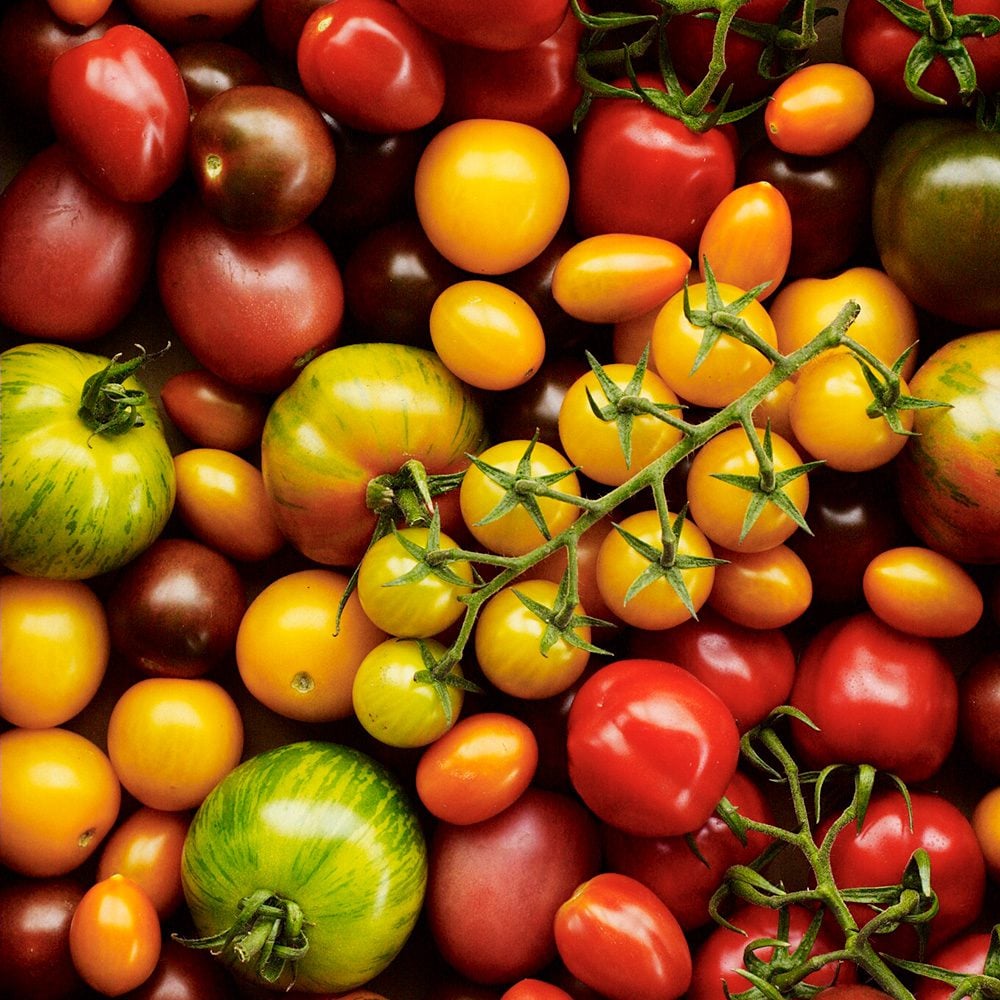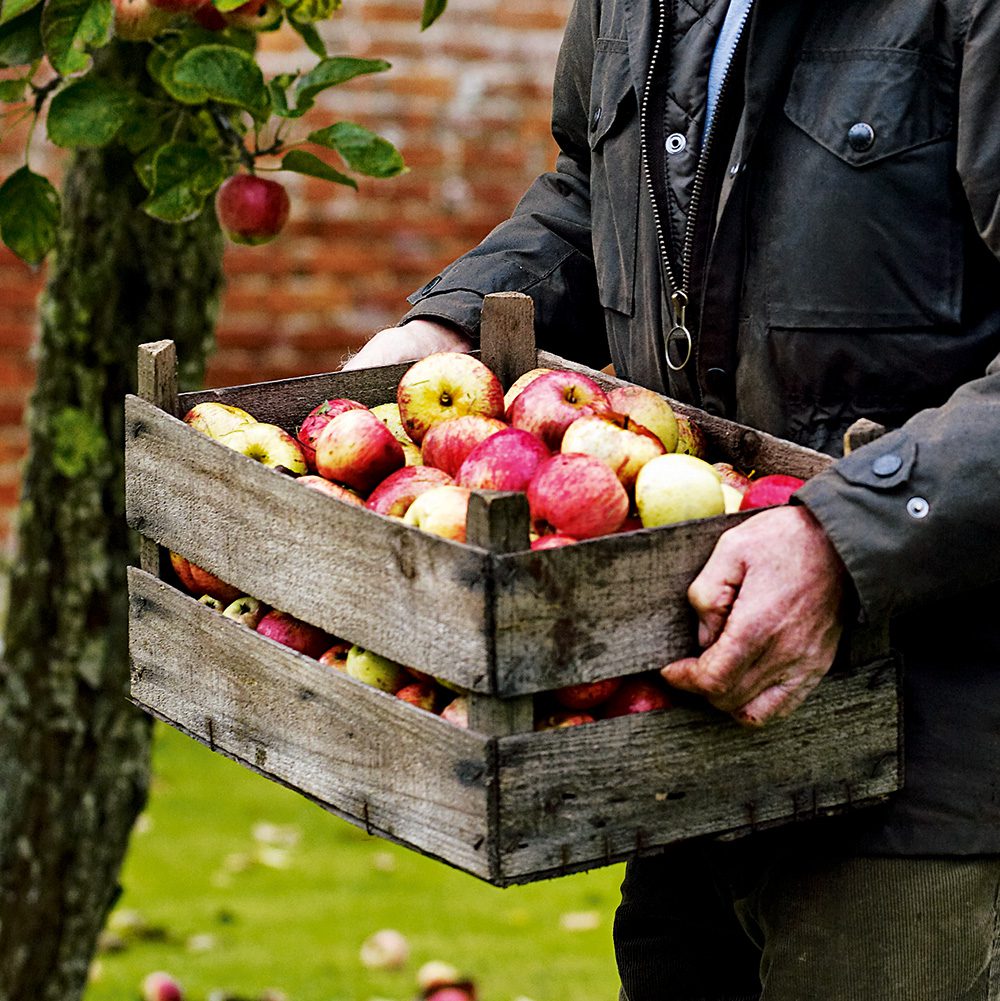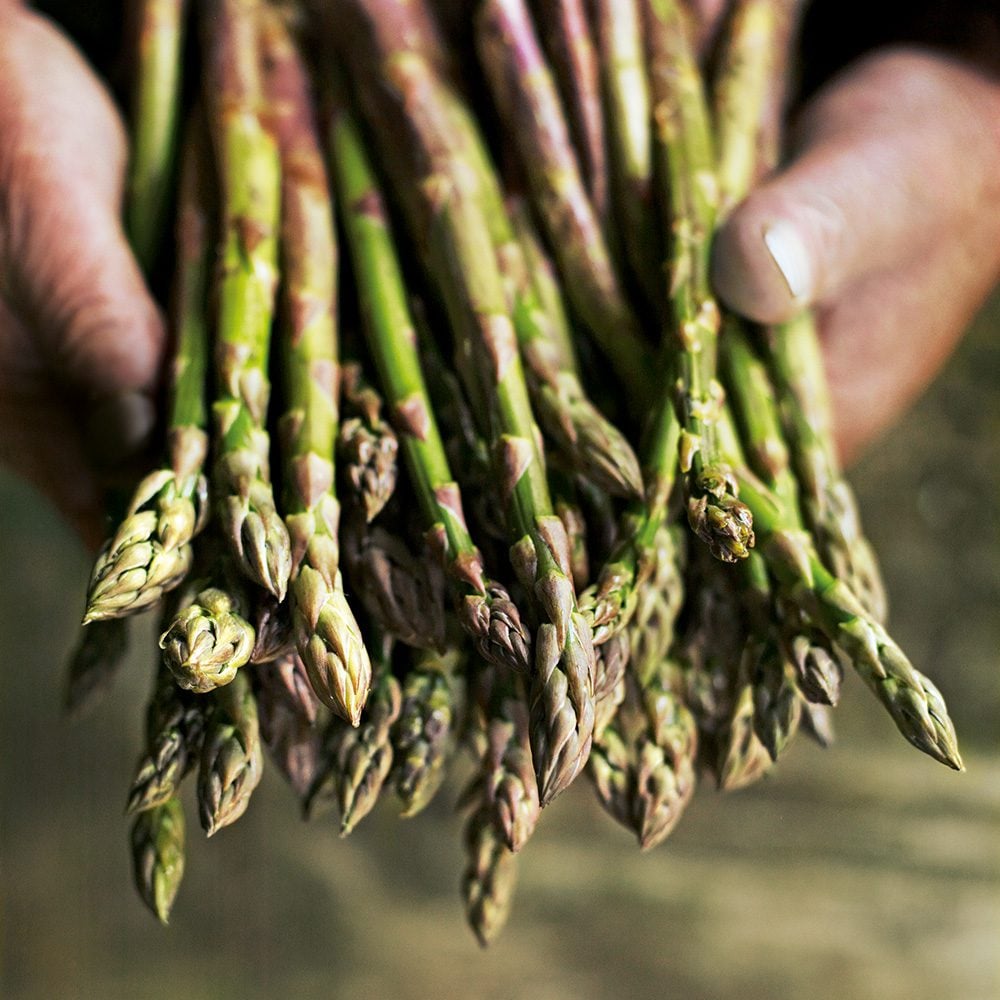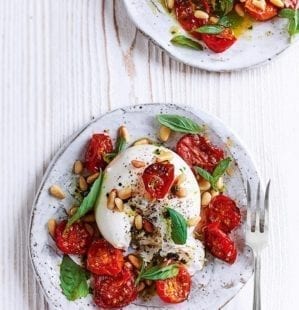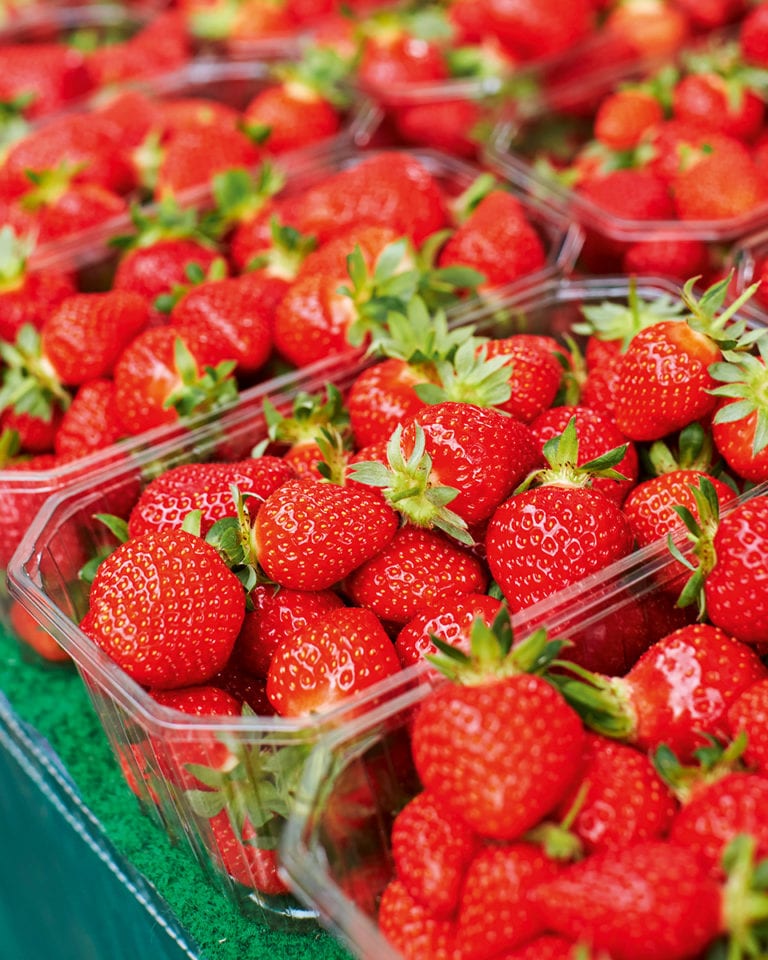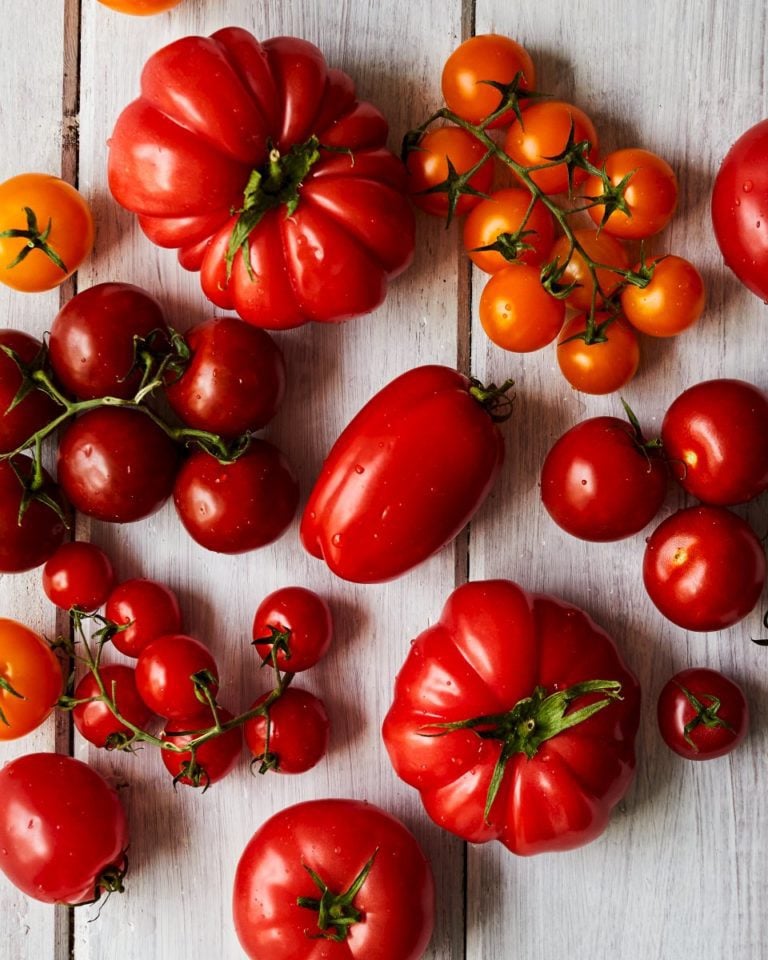Tomatoes in October? What new tech and climate change mean for seasonal eating
Strawberries in March; tomatoes in October; apples at any time of year… Thanks to new varieties, horticultural innovations and high-tech storage, the cycle of British produce changing through the seasons isn’t what it used to be, says Clare Finney – yet the pleasures of seasonal eating have a perennial pull.
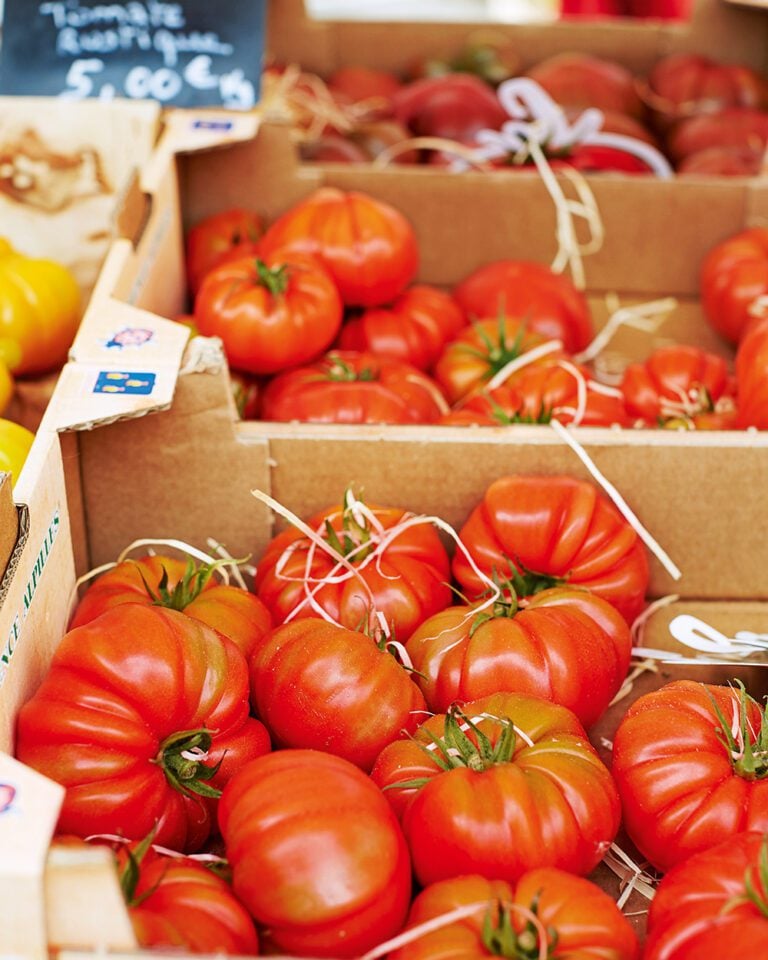
It started with strawberries. Twenty years ago, they were strictly summer only. Their cheery appearance on shop shelves or pick your own signs come June foretokened sunshine and long days. Then they started appearing in April, even March, and remaining after autumn’s falling leaves. Some were Spanish imports, but increasingly they were British, enabled by advances in growing techniques, the development of new varieties and warming weather.
Tomatoes, raspberries, basil… Even goat’s cheese has since joined the crew of formerly seasonal British foods that are now available year round. When planning her book, Seasoning, food writer Angela Clutton found it tricky to define what seasonality means in an era of getting whatever you want, whenever you want it. Despite that, she says, “I like the feeling of having certain things at certain times. I like the anticipation, the joy – even the loss. It breaks up the tedium.”
It’s interesting – and perhaps reflective of our national character – that the food to appear ‘unseasonably’ is always spring and summer produce. “No one wants swede in August,” says Clutton. The recipes of winter produce lend themselves to cold, dark nights and our need to hunker down over bowls of comfort food.
For food writer and gardener (not to mention delicious. book reviewer) Mark Diacono, we should apply the same logic to enjoying a salad of tomatoes and basil, “which ripen slowly together with sun on their backs”. But it’s easy to lose sight of that when we see these things in-store all year round.
There are counterarguments. Modern dairy farming provides cheesemakers with a more even, standardised milk supply so they can produce cheese of a more consistent quality throughout the year. Vertical farming means fresh salads and leaves can be cultivated in the heart of cities at a fraction of the energy cost. The high-tech polytunnels giving us strawberries in November are protecting the plants from the sustained heavy rains and pest infestations that are a result of climate change. Without them, we might struggle to have strawberries at all.
And yet… No one who’s tasted a fresh tomato and basil salad or strawberries and cream in the garden, in the height of summer, could deny Diacono’s point that “eating food at the right time and place is one of the greatest pleasures of being alive”. The following developments are interesting and, in some cases, necessary – but perhaps they shouldn’t come at the expense of seasonality’s joys.
No one who’s tasted a tomato and basil salad in the height of summer could deny that “eating food at the right time and place is one of the greatest pleasures of being alive”
No longer seasonal
Goodies whose window of availability has opened wider and wider
Purple sprouting broccoli
One of the few dark leafy greens that feels as at home in mid-winter as it does in spring. “This is plant development,” says Diacono. “You can grow different varieties of purple sprouting broccoli. Some come early, some late, some are cut, then come again later in the year.” Strictly speaking, the season is March and April, but growers have extended that, says Paddy Plunkett, a buyer at Natoora, by “selecting seeds that do well in different conditions over time”.
Strawberries and raspberries
Polytunnels, new growing media and new varieties (bred for longer shelf life, hardiness and sweetness) have given these soft fruit a longer season. “We’ve moved to ever-bearing varieties over June-bearers,” says Jake Pickering at Waitrose. “They’re more consistent and flower for longer.” Soft fruit grower Bal Padda’s business has been transformed since his father began 27 years ago. “The growing season was six weeks. Then came the polytunnels.” At their simplest, they trap heat and protect against rain – but many are much more advanced. “Ours have seven layers,” says Padda, “one preventing condensation.”
The plants are grown on tables, in coconut-husk coir for better growth and easier picking. Coir is fairly environmentally friendly, and reduces pests and pathogens. Today, Padda’s strawberry season runs from May to November – others pick March to December.
Goat’s cheese
Honey-drizzled it’s spring in a mouthful – or it was, before artificial insemination and a better understanding of breeding enabled goat farmers to ensure a more constant milk supply. Historically, like sheep, goats would kid in spring – but “people are craftier about getting goats in kid so they have an even supply through the year,” says David Lockwood of Neal’s Yard Dairy. There will still be seasonal variations, though, according to where the goats are feeding and what they’re eating.
Tomatoes
Polytunnels and heated glasshouses have transformed UK tomato cultivation, delivering juicy toms year round. However, “stress makes tomatoes taste good, and they get more stressed when they’re open to the elements,” says Plunkett. Some British growers are looking into recycling ‘waste’ heat from other industries to make heated glasshouses more renewable, but even without that, high-tech polytunnels enable growers to extend the season. “Cornish growers can plant theirs in February and harvest in July; further north they start later and finish in October.”
Leafy herbs
There’s a new UK alternative to unsustainable imported herbs in packets, heat-forced pots and seasonal nursery-grown plants: vertical farming. Crops are grown indoors in stacked layers. The conditions are consistent and the supply chain is minimal. “We produce 350 times more in the same space, with 90% less water, 95% less fertiliser and no pesticides. The energy [for heat and light] is 100% renewable,” says Chris Davies, co-founder of Harvest London. “We compete with what we import: Italian, Mexican and Thai herbs and salads.”
“Vertical herb farming produces 350 times more in the same space, with 90% less water, 95% less fertiliser and no pesticides. The energy is all renewable”
Apples and pears
These keep for a long time in the fridge. British growers exploit this, putting apples in oxygen-free cold stores to stagger the crop over several months. “You have to get the timing right,” says Robinson. The crop must be grown close to the store, and stored “when it has the maximum flavour and nutrients”. Britain has apple and pear varieties ripening August to November. Not all store well, but those that do keep us stocked until spring.
Mushrooms
We can buy buttons, portobello and oysters year-round. This isn’t new but scientific advances mean they can now be grown at scale. “Two things have enabled the boom,” says Robbie Pearce of the Atlantic Funghi Co-op: “a master mix of soy hulls from the soy industry and the evolution of single-use mushroom bags.”
Environmental issues mean growers like Pearce are turning to sustainable growing media and reusable containers. “We grow in sawdust mix [from the furniture industry] inoculated with live material.”
Grab ’em while you can
Products you can still eat only for a brief, blissful period
Asparagus
If winter is warm, the asparagus window can open early. Waitrose was the first to have British spears this year, thanks to an “innovative growing medium”. It can be grown in polytunnels, but it’s not worth it, says Plunkett. “It doesn’t taste as good.”
Jersey royals
The island slopes north/south, so there’s lots of sun, plus light soil and seaweed fertiliser. Harvest is March to July and while glasshouses and polytunnels and have extended this, the island’s topography limits their use.
Wild foods
Things we forage (elderflower, sea vegetables, wild garlic) and much of what we fish for (Cornish sardines, crab, mackerel) are seasonal and subject to climate change – and we still haven’t worked out how to grow morels and chanterelle mushrooms.

From abroad… Italian blood oranges
“Warm days and cold nights are what help the pigmentation and flavour,” says Plunkett, of the citrus beauties. The long season, January to May, is possible because they store well and different varieties fruit at different times.
Inspired to embrace summer’s bounty? Discover our favourite seasonal recipes for July.
Subscribe to our magazine
Food stories, skills and tested recipes, straight to your door... Enjoy 5 issues for just £5 with our special introductory offer.
Subscribe
Unleash your inner chef
Looking for inspiration? Receive the latest recipes with our newsletter
